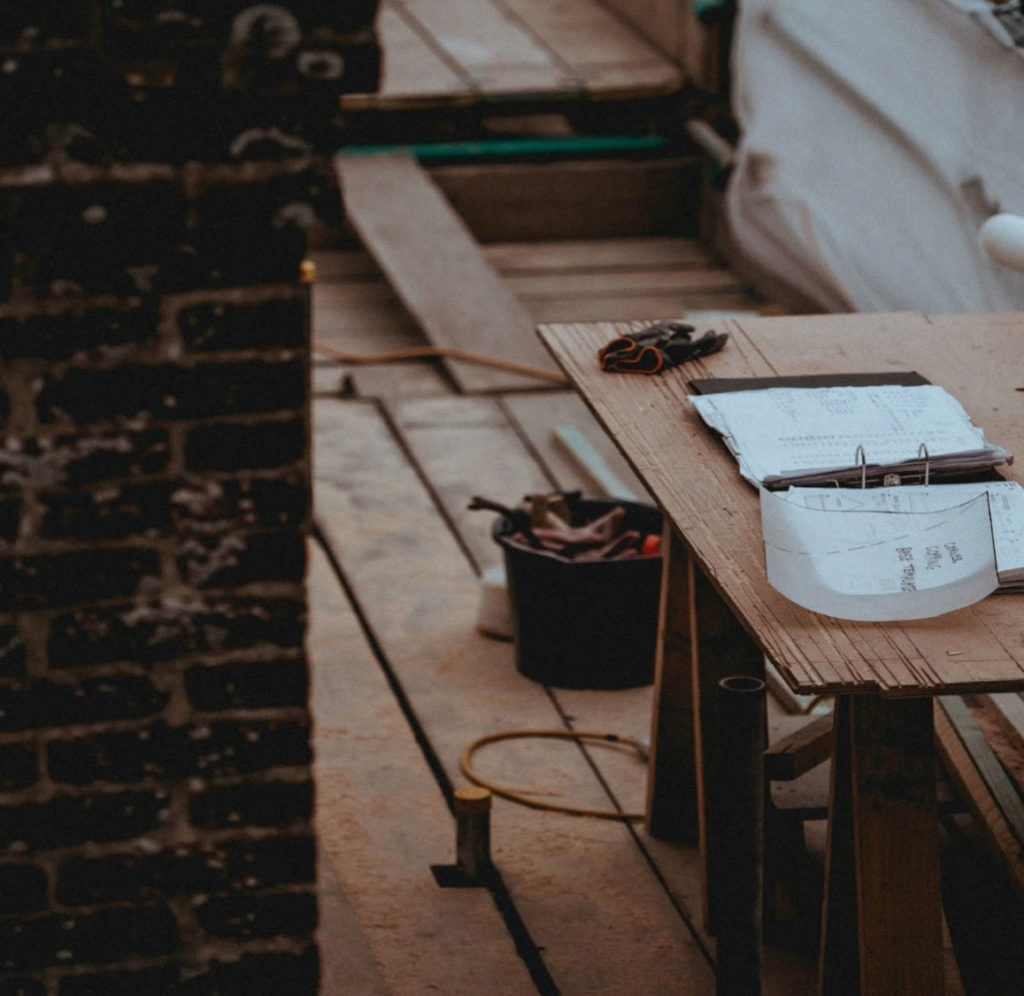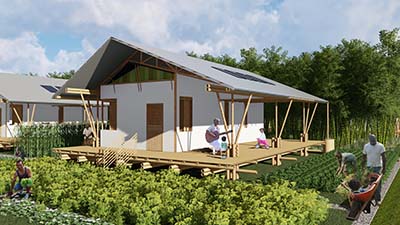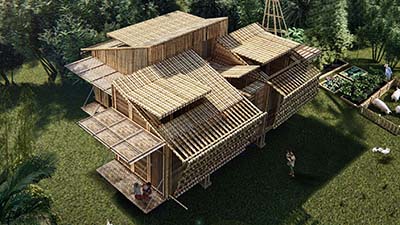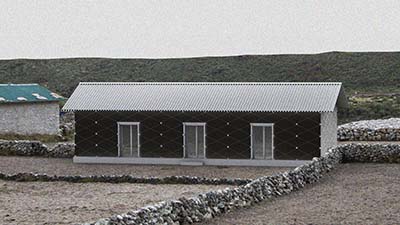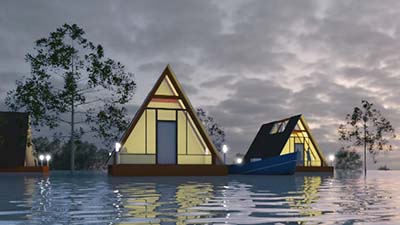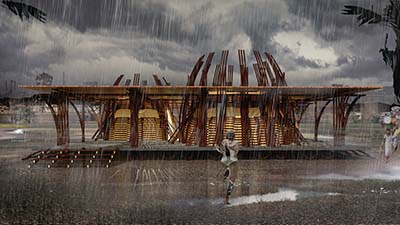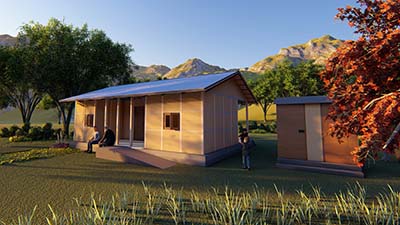Resilient Homes Challenge
Help us create resilient homes for people in some of the most vulnerable areas of the World.





Calling all architects and engineers
In 2018 Build Academy organized a Resilient Homes Challenge Architecture Competition.
Natural disasters are on the rise. Since 1990, natural disasters have affected on average 217 million people every single year. Hundreds of floods, storms, heat waves and droughts have left about 606,000 people dead and 4.1 billion injured or homeless around the world since 1995. And it is often the poorest that suffer the most from these shocks.
As architects and engineers, we can design resilient and sustainable houses that both reduce the risk of damage and enable rapid reconstruction following a disaster.
The World Bank, Build Academy, Airbnb, and GFDRR inspired and mobilized architects and engineers around the world to develop designs for resilient, modular and affordable homes that cost under $10,000.
Winning designs were published and exhibited at the World Bank in Washington DC, the UN in New York, the WEF in Davos and the GDRR conference in Geneva.
Winning designs eventually informed resilient housing or reconstruction work for World Bank-funded projects in places like the Caribbean, South and East Asia, etc.
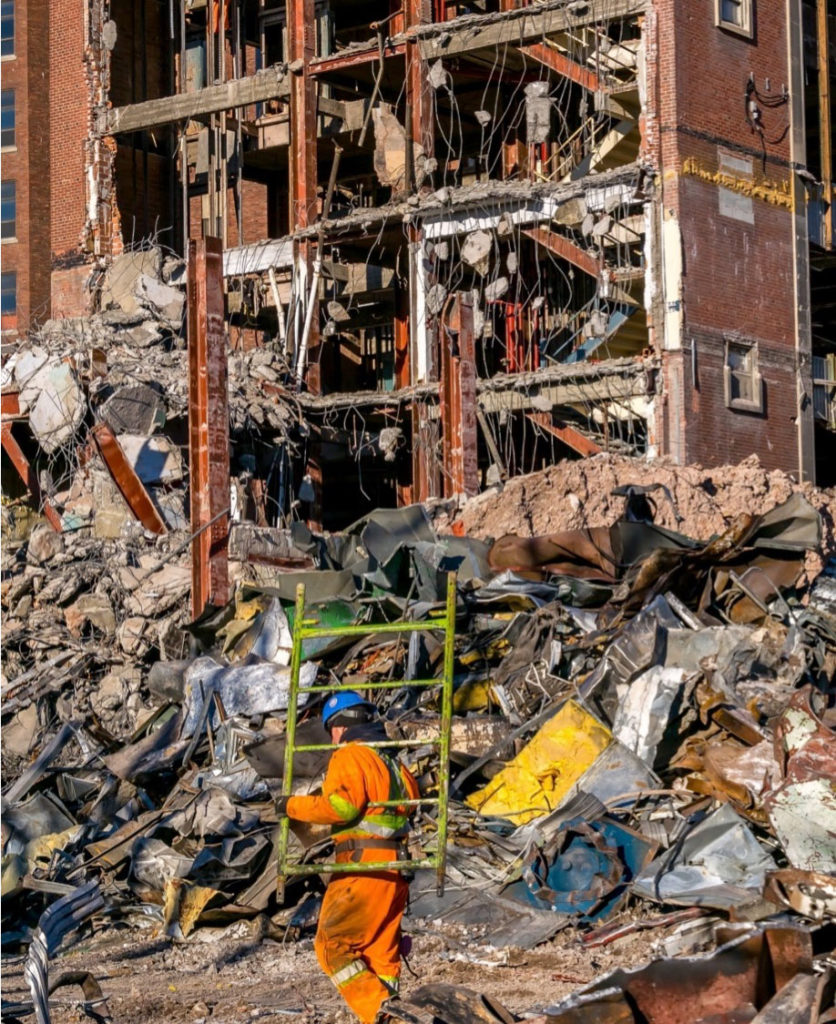
How it worked
- Anyone was allowed to sign up with no registration fee and to form a team, or participate on their own, provided that they are an architect or civil engineer,
- Participated in the optional educational tutorials to enhance your knowledge of the context,
- If participants need some help, they had the option to receive regular feedback from Experts in the field and in group forums on Zoom,
- Then they submited their final proposal by November 30th, 2018, latest,
- A highly reputable Jury selected and announceed the winners on December 14th, 2018.
Architecture Competition Context
The competition calls for designing a modular house costing under $10,000 that should be easy to build.
The challenge has been designed for three scenarios. Design teams can submit designs for a single scenario or all three scenarios depending on their preference.
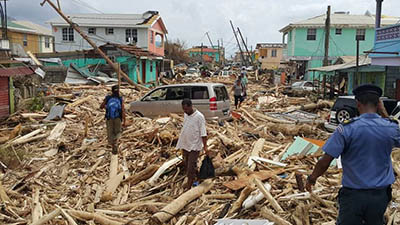
Scenario 1
| HAZARD | Earthquakes and Tropical storms with wind speeds in excess of 250 km/hr. (cyclones/ hurricanes/ typhoons) |
| GEOGRAPHY | Island countries (example: the Caribbean including Haiti) |
| CLIMATE | Hot summers and mild winters |
| ADDED CHALLENGE | Heavy cost of ferrying in construction material |
| CONSTRUCTION COST | Material: $120/sqm Labor: $50/sqm Transport: $80/sqm |
| PLOT | Assume a 20 m x 20 m plot size in a low-lying area |

Scenario 2
| HAZARD | Earthquakes up to 7.0 on Richter’s scale also resulting in landslides |
| GEOGRAPHY | Mountain & inland areas (example: Nepal, northern India, Peru etc.) |
| CLIMATE | Harsh winters and mild summers |
| ADDED CHALLENGE | Terrain difficulty in transporting heavy construction material |
| CONSTRUCTION COST | Material: $120/sqm Labor: $50/sqm Transport: $50/sqm |
| PLOT | Assume a 20 m x 20 m plot size in a rocky terrain which is part sloping (gentle gradient) |

Scenario 3
| HAZARD | Tropical storms with wind speeds in excess of 250 km/hr (cyclones/hurricanes/typhoons) also resulting in localized flooding (low-lying areas) |
| GEOGRAPHY | Coastal areas (example: Bangladesh, Philippines etc.) |
| CLIMATE | Hot summers with areas of heavy rainfall |
| CONSTRUCTION COST | Material: $120/sqm Labor: $50/sqm Transport: $30/sqm |
| PLOT | Assume a 20 m x 20 m plot size in a low-lying area which is around 500 m from the coastline. |
Guidelines
Design teams are encouraged to look beyond “fully pre-fabricated” housing designs in order to allow incorporating local building materials and techniques into their designs; designs could be fully, partially or not prefabricated with a clear aim towards ease of construction
- Designs incorporate climatic conditions
- Integration of storage tank for rainwater collection is preferred
- Toilets should be environmentally friendly, attached or detached
- Housing material should be fireproof/treatable to be fireproof
- Project construction cost should be limited to $10,000
Suggested dimensions
AREA: The houses should accommodate a family of 4-5 people in about 40-50m2.
KITCHEN: 8-12m2, storage and cooking space
BATHROOM & TOILET: 5-8m2 (combined or separate)
BEDROOM: 12-15m2; storage space 1-2m2
MAINROOM: 20m2, could be used as a bedroom at night
MINIMAL HEIGHT: 2.5m
Participants are encouraged to respect the building codes of the countries they are designing for.
Outcomes
Challenge participants will apply their skills and knowledge to design of resilient architecture and how it can be implemented both in rural and urban settings. They will have the opportunity to improve their design and collaboration skills, working with a global community of professionals from all over the world, and receiving feedback from professors and experts. The work will be done by teams formed by independent practitioners who will work together on developing integral projects that include aspects of architectural design, structural engineering, building technology, social space, community development, economic feasibility, sustainability, and resilience.

Eligibility
At least one member of the team should have an architectural or/and civil engineering degree. For designers, previous architectural experience is highly recommended. Other members who participate can also include graduate students or last year students of architecture. The expectation is to have a multi-disciplinary team that can collaborate with companies and people from many different backgrounds: architecture, engineering, design, social workers, etc.
Methodology
The challenge will feature collaborations and teamwork. We will also have a forum on Facebook, where participants will be able to exchange and discuss design ideas. During the challenge, the projects will be developed to the phase of schematic design.
Deliverables
Submission format
- 2 Square boards sized 3x3ft (as a PDF) min. 300 dpi, using the layout described below; the board is visually divided into 8 equally sized sections (1.5×1.5 ft), each section having a designated topic.
- Design Portfolio: digitally cut the board into the 8 square parts and submit the parts as 8 separate PDFs (numbered accordingly).
Submission content
- Design Documents (PDFs)
- Explanatory text: Overview of Design
This text is supposed to give the jury a snapshot overview of your overall design approach. up to 1,000 words total. Please download the template here (to download it, click on ‘File’ > ‘Download as’ > ‘Microsoft Word Document’). - Visualizations
Please find below the list of required visualizations. You are of course more than welcome to add explanatory texts to each visualization.
- 3-5 renderings of exterior (at the very least: frontal, side, bird’s view)
- 2-3 renderings of Interior (optional)
- Axonometric Diagram (foundation, horizontal/vertical structure, slabs, walls, roof; 1:50)
- Building Plans (1:50)
- 2 Sections (1:20)
- 2 Facades/Elevations (1:50)
- Site Plan (1:200) of the 20x20m site (optional)
- Community aggregation view (optional)
4. Construction Phasing (optional)
If your design requires non-traditional construction techniques, please provide construction drawings (1:20), construction options and recommendations for construction phasing of individual home
5. Schedule of Rates (.XCL, XCLS): The schedule of rates is supposed to be a list of materials used and their respective cost.
Submission file format
All documents and panels are to be submitted in PDF.
The Schedule of Rates is to be submitted as Excel file (.xls, .xlsx)
Font used for panels should be Helvetica; 50 pt. for titles, 30pt. for subtitles, and 24 pt. for body, 20pt. for index. Font used for documents should be Arial 10pt. for body.
All text must be in English, using font Helvetica: 30 pt. for titles and 20 pt. for body.
All files will be submitted digitally in PDF format by November 30 2018 at BuildAcademy.com and by email to contact@buildacademy.com
To see the complete Submission Guide please click HERE.
Optional guidance
If participants require additional support, the team of Build Academy and invited experts will provide the option of weekly guidance and feedback for their work through a video conference on Zoom.
| 1 Natural Disasters and Resilient Design |
| 2 Spatial Design |
| 3 Resilient Unit Design |
| 4 Unit Aggregation Strategies |
| 5 Resilient Urban Design |
| 6 Final Q&A about Project Submission |
Evaluation criteria
- Resilience (25%)
- Design (20%)
- Cost Effectiveness (15%)
- Construction (15%)
- Sustainability (15%)
- Presentation (10%)
Design copyright
The copyright of all design will remain with the authors. Build Academy and the WBG will have the rights to publish the results.
Jury
Media sponsors
Ask a question
If you have any question about this architecture competition, please contact us!

